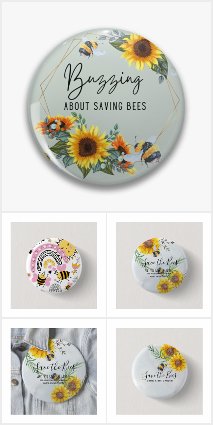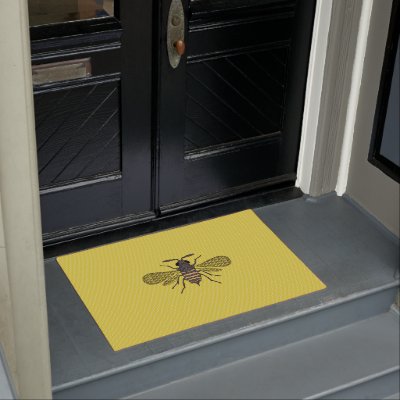 BEES and Honeycomb - Save The Bees Doormat
BEES and Honeycomb - Save The Bees Doormat
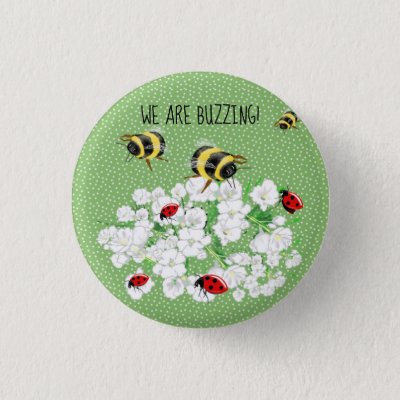 BEES and LadyBugs - Art by LeahG Save The Bees Button
BEES and LadyBugs - Art by LeahG Save The Bees Button
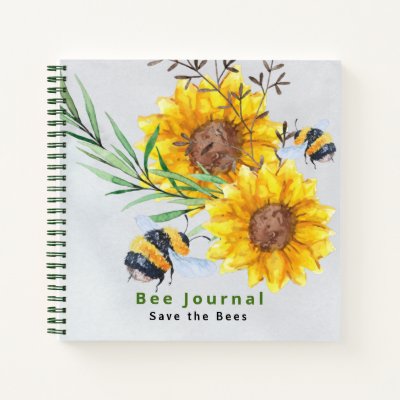 BEE Watching Journal - Bee Keepers and Rescuers
BEE Watching Journal - Bee Keepers and Rescuers
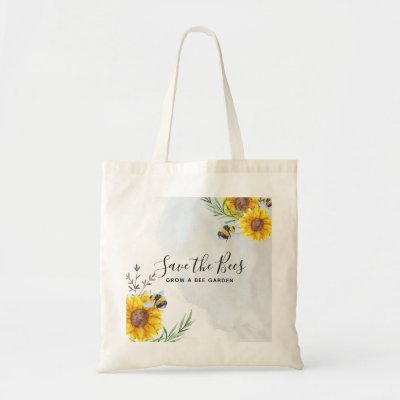 Save The Bees - Quotes, Slogans Sayings Sunflowers Tote Bag
Save The Bees - Quotes, Slogans Sayings Sunflowers Tote Bag
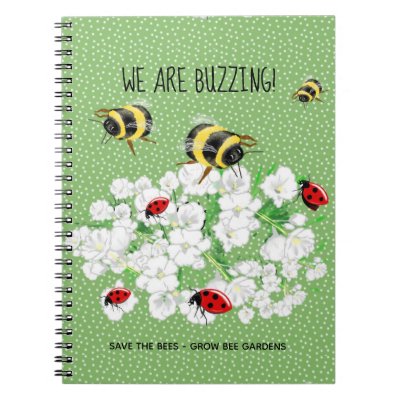 BEES and LadyBugs - Art by LeahG Save The Bees Notebook
BEES and LadyBugs - Art by LeahG Save The Bees Notebook
 Save The Bees - Quotes, Slogans Sayings Sunflowers Air Freshener
Save The Bees - Quotes, Slogans Sayings Sunflowers Air Freshener
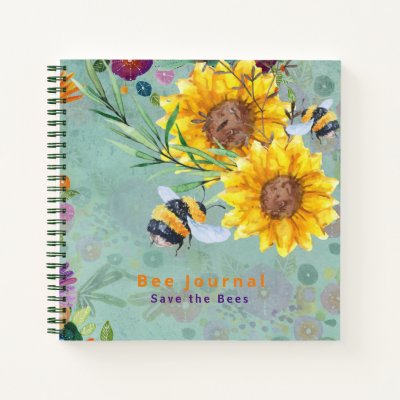 BEE Watching Journal - Bee Keepers and Rescuers
BEE Watching Journal - Bee Keepers and Rescuers
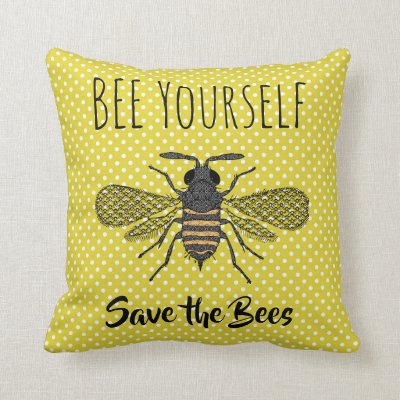 BEES and Honeycomb - Save The Bees Throw Pillow
BEES and Honeycomb - Save The Bees Throw Pillow
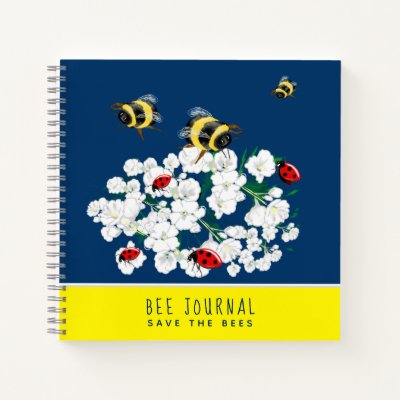 BEE Watching Journal - Bee Keepers and Rescuers
BEE Watching Journal - Bee Keepers and Rescuers
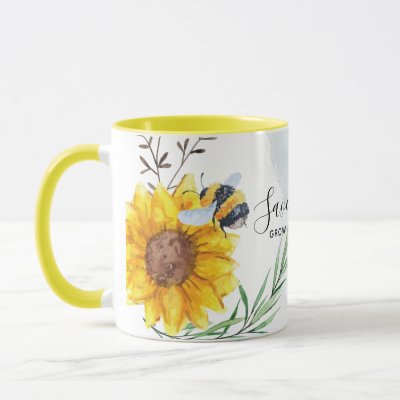 Save The Bees - Quotes, Slogans Sayings Sunflowers Mug
Save The Bees - Quotes, Slogans Sayings Sunflowers Mug
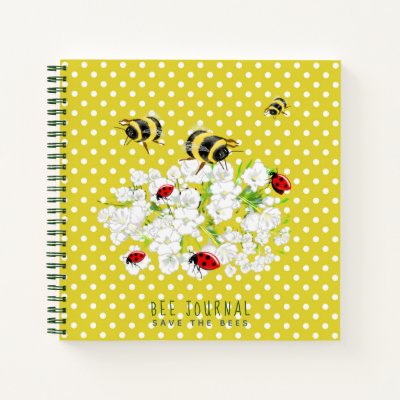 BEE Watching Journal - Bee Keepers and Rescuers
BEE Watching Journal - Bee Keepers and Rescuers
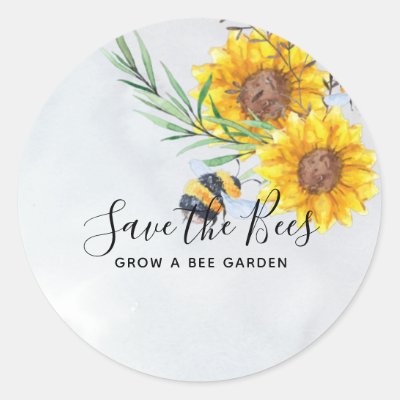 One of a Kind SAVE THE BEES Personalized Classic Round Sticker
One of a Kind SAVE THE BEES Personalized Classic Round Sticker
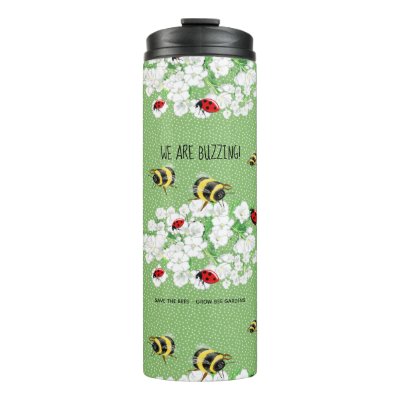 BEES and LadyBugs - Art by LeahG Save The Bees Thermal Tumbler
BEES and LadyBugs - Art by LeahG Save The Bees Thermal Tumbler
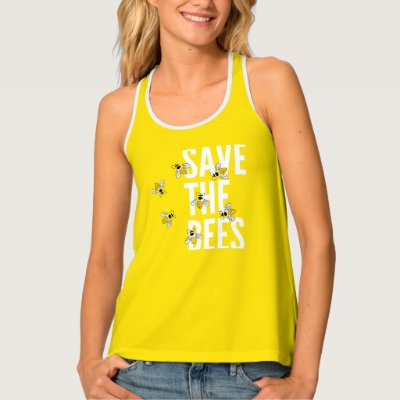 Save The Bees Tank Top
Save The Bees Tank Top
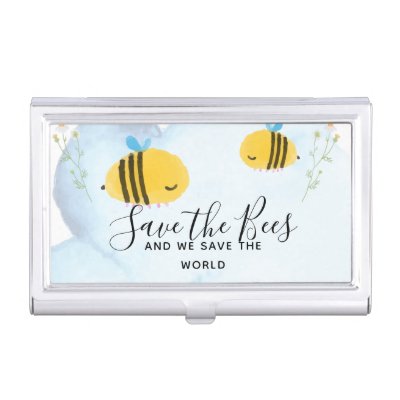 Save The Bees Personalized Quotes Sayings Slogans Business Card Case
Save The Bees Personalized Quotes Sayings Slogans Business Card Case
1. Eliminate the use of insecticides, particularly in 'cosmetic' gardening.
There are more effective methods of dealing with pests - particularly biological controls - than what is now available. Modern pesticides are incredibly potent, and many of them are long-lasting and exceedingly toxic to bees and other insects, making them particularly dangerous. To conserve the bees, we must eliminate all needless pesticides from the environment, which is arguably the most crucial thing we can do to save them.
2. Stay away from seeds that have been treated with systemic pesticides.
Precautions should be taken because many seeds are now coated with Clothianidin and comparable systemic insecticides, which cause the entire plant, including the bees and other insects that may feed on it, to become toxic to bees and other insects. Check your seed packets thoroughly - and if you're still unsure, contact the manufacturer for more information.
3. Pay attention to the labeling on garden compost - be on the lookout for hidden bee dangers!
Some garden composts are available for purchase that contain Imidacloprid, a lethal insecticide made by Bayer that is toxic to plants. It is frequently marketed as 'vine weevil protection' or something similar, but it is extremely toxic to all insects and soil life, including helpful earthworms, and should be avoided. Because the pesticide is absorbed by the plants, if you use this compost in hanging baskets, bees that are looking for water in the damp compost may be killed by the insecticide.
4. Establish a natural habitat.
If you have enough room in your garden, consider allowing some of it to become overgrown in order to provide a safe refuge for bees and other insects as well as small mammals. Gardens that are well manicured are not very welcoming to wildlife!
5. Plant flowers that are beneficial to bees.
Wildflower seeds can be purchased from a variety of seed shops, and they can be planted in any spare area of ground - including waste ground that is not being used for agriculture. The plants are also planted in public areas by some 'guerrilla gardeners'.
6. Create an area for beehives to live on.
Offer a portion of your yard to a local beekeeper in exchange for the use of one or two beehives. If you have the space, you could even host a beekeeping workshop in your home! They will require regular access, so keep this in mind while selecting a location.
7: Construct a hive for the wild bees
Providing a modest box for feral bees to establish a home is a step short of starting a beekeeping business, but it may appeal to folks who wish to have bees nearby but don't want to be engaged in the maintenance of the hives. The internet is full of suggestions for such enclosures.
8.Support the beekeepers in your community.
Local honey is widely believed to be beneficial for persons suffering from hayfever and other allergies, which is one solid reason to purchase honey from a local beekeeper rather than from supermarkets, which typically source honey from thousands of kilometres away. If at all possible, seek out a beekeeper who does not use any chemicals in his hives and ask for comb honey for a truly delicious treat.
9. Learn everything you can about bees and then tell everyone you know.
Bees are enthralling creatures that only a small number of people take the time to learn about and appreciate fully. Read an excellent book about bees and beekeeping, and who knows - you could be inspired to do one of the following things.
10. Join the beekeeping community.
You don't need any of the pricey equipment you see in the glossy catalogues to become a beekeeper, which makes it a far more accessible profession. Everything you need to effectively raise bees can be constructed by anyone with a few simple tools: if you can set up a shelf, you can most likely build a beehive as well.
Source material Barefoot Beekeeper
Let's Not Forget About Bumble Bees!
Almost certainly, you are aware that honeybees all over the world are in danger. Commercial beekeepers are facing tremendous losses as large percentages of their bees succumb to an unknown sickness or just perish due to lack of food. The fact that so much of our food supply is dependent on bee pollination suggests that this could be a severe concern for all of us.
Unfortunately, most people are unaware that the modest bumblebee, as well as other solitary bees that visit our Gardens, are also experiencing difficulties and are declining in numbers. I feel that one of the primary reasons for this is simply that the majority of gardeners are not even aware of the habits of these indefatigable pollinators, who do so much good for our garden's fruit and flowers, and are therefore unaware of their presence.
Bumble bees prefer to build their nests in holes in the ground, and they have been known to use existing mouse nests as nesting sites. They are more likely to seek for grassy clumps with nectar and pollen-producing flowers nearby, which are often your flower beds, as opposed to other types of vegetation. The unfortunate reality is that some modern gardening trends are giving them difficulties.
For starters, people are advised to use weed suppressing cloth, which saves them time and effort in the long run.
This can be used in a variety of ways, including lying beneath pathways, for example. When the bumblebee is utilised in an indiscriminate manner in the flower bed, it causes complications for the gardener. In search of a suitable location for its nest, the bumblebee burrows a few inches into the dirt until it reaches the obstruction. It continues to dig about with a single-minded resolve, not wanting to give up the perfect location for its nest for any reason.
Eventually, the poor creature exhausts itself and succumbs to fatigue and dehydration.
By being a little more conscientious and making certain that there are acceptable places left towards the back of the border for the bumblebees, the gardener can avoid all of this unnecessary misery.
The other issue that the bumblebee has to deal with is the prevalent practise of mulching.
During the normal set of circumstances, the young female queens will overwinter in the nest, which is tucked away safely below ground. They reappear in the spring to look for new nesting places, and the cycle begins all over again. Because of the widespread usage of mulch on all of the borders and not only where it is needed, these unfortunate critters have discovered that they have been buried alive as a result of this practise.
A successful garden should provide benefits not just to us, but also to the plethora of other species that make their home in the space. Realizing that we need to be more conscious of our small neighbours, how they live, and how we may assist them is the true problem. Despite the fact that bumblebees and other solitary bees are in serious decline, we may reverse this trend by simply providing them with locations to nest and planting some old-fashioned flowers that will provide them with pollen and nectar.
Source How To Care For Your Bees
Bees prefer to face the rising light in the morning, so do your best to keep them happy. They are diligent workers who prefer to get an early start facing the rising sun. Ideally, the bees like a beehive that is one to two metres above the ground. This prevents invading insects from simply accessing the beehive, and the presence of wetness under the beehive attracts insects as a result of this. For those who find it impractical to raise their beehives to that height, you can get a beehive stand from your local Apiary. You should also consult with the local beekeepers for help, as pest problems differ from one region to another. I hoist the beehive off the ground with an old vehicle tyre, which is sufficient for my needs in this location. In addition, I have free range poultry to keep the insects under control.
In order to properly care for your honey bees, you must provide plenty of water. Water accounts for 20% of honey's composition, therefore a reliable supply must be available close to the beehive at all times. It is essential that the water supply be designed in such a way that honey bees will have landing space; otherwise, they would fall into the water and drown. A drum of water is not a good option in this situation. The closest natural streams and dams are the best if they can be found nearby. Another option is to create an artificial pond in your backyard as part of your environmental landscape. Swimming pools can be problematic for honey bees since the water is not easily available to them, and falling into the pool will stress the bee, making it less friendly to youngsters who step on them. Additionally, the water in a swimming pool is not what a bee requires. Provide a backup water supply close to the beehive if you have a swimming pool on your property.
Your honey bees' survival and health are also dependent on proper ventilation, thus your entrances should be strategically located to allow for unrestricted ventilation. The entrance holes must be large enough to allow the bees to create a circular airflow, which is especially important in hot summer climates. I make my entries on the front side of the brood, one on the left bottom and the other on the right bottom, one on each side of the front side. Approximately sixty millimeters in length and ten millimeters in height allow me to insert the front part of my index finger into the beehive with no difficulty. The height of the entrance specified will allow bees to enter freely, but more importantly, it will keep rodents out of the building. It will be necessary to drill a few ten millimetre diameter holes in the highest lid on opposing sides of the hive in winter snow areas in order to allow the heat created by the bees aggregating, to keep warm, to escape.
If your beehive is located in an area where you need to keep honey-loving creatures under control. In order to prevent bears from knocking down your beehives, you should install an electric fence around them that is not less than a metre or more in height. Butting the fence wires close together will also assist. In addition, your stand should be elevated above the ground in order to keep out tiny creatures like as skunks.
In order to properly care for your honey bees in snowfall areas, you would need to leave at least three supers full of honey on top of the brood, which would amount to approximately seventy pounds of honey total. You will need to keep an eye on their honey supply since you may need to provide them with cane syrup to ensure their survival throughout the winter months until the blooms are in full bloom during the summer months.
As a conclusion to the preceding guide, your beekeeping friends will provide you with the most practical advice and solutions for your particular situation. The information provided above is not intended to be comprehensive; rather, it is intended to serve as a starting point for your beekeeping endeavours. When caring for your bees, keep in mind that all bees sting, so make sure you have your bee suit, cap, and vail on, as well as the beehive smoker ready before peering into the hive.

3 ways you can help rescue bees
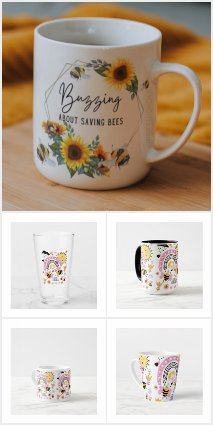
Bees pollinate one-third of the food that we consume; without them, we would be extinct. You may contribute to the cause by taking these three simple actions.
1. Create a Bee Garden using plants that are beneficial to bees.
2. Fill a small dish halfway with clean water and set it aside as a Bee drinking bath. Make a swarming area with pebbles and stones for the bees to land on and drink from.
3. Provide a safe haven for natural bees such as bumblebees, who do not live in hives and are solitary creatures. Provide a bee hotel in a calm, undisturbed location for them to use as a hive for constructing a colony. You may purchase these online, or you can make your own!
Visit my Bee Store for Bee awareness buttons, stickers, keychains and personalized gifts, accessories and decor.
This collection of adorable Save the Bee gifts, decorative items, and accessories has me buzzing with excitement. Text template fields allow you to include your own save the bees slogan, quote, amusing, friendly, or awareness-raising statement in addition to the default text template. What could be a better way to start your day than this? All of the items in the SaveBees store are decorated with adorable BEE drawings.
Bee enthusiasts, beekeepers, bee rescues, and bee fanatics will find something to their liking in this section. We must raise awareness about rescuing bees, protecting bees' habitat, planting bee-friendly flowers, allowing flowering weeds to develop, and providing bee resting locations, water, and room for all bees to thrive and establish hives. Join us!
The efforts of a slew of fantastic bee-friendly individuals have been spreading awareness, from the flightless bee with no foot to the courageous bee lady who saves and relocates bees while wearing no protective clothing!
She is very remarkable. You have the ability to BE wonderful as well. Find a BEE saving club to get bee photographs, photos, illustrations, and, most importantly, advice on how to protect and save bees and their colonies. Bumblebees, honey bees, and all other types of bees will thank you for getting it right this time. Spread the word about your love for bees far and wide. BEE lovers, have a wonderful BEE day.

 Bees pollinate one-third of the food that we consume; without them, we would be extinct. You may contribute to the cause by taking these three simple actions.
Bees pollinate one-third of the food that we consume; without them, we would be extinct. You may contribute to the cause by taking these three simple actions. BEES and Honeycomb - Save The Bees Doormat
BEES and Honeycomb - Save The Bees Doormat BEES and LadyBugs - Art by LeahG Save The Bees Button
BEES and LadyBugs - Art by LeahG Save The Bees Button BEE Watching Journal - Bee Keepers and Rescuers
BEE Watching Journal - Bee Keepers and Rescuers Save The Bees - Quotes, Slogans Sayings Sunflowers Tote Bag
Save The Bees - Quotes, Slogans Sayings Sunflowers Tote Bag BEES and LadyBugs - Art by LeahG Save The Bees Notebook
BEES and LadyBugs - Art by LeahG Save The Bees Notebook Save The Bees - Quotes, Slogans Sayings Sunflowers Air Freshener
Save The Bees - Quotes, Slogans Sayings Sunflowers Air Freshener BEE Watching Journal - Bee Keepers and Rescuers
BEE Watching Journal - Bee Keepers and Rescuers BEES and Honeycomb - Save The Bees Throw Pillow
BEES and Honeycomb - Save The Bees Throw Pillow BEE Watching Journal - Bee Keepers and Rescuers
BEE Watching Journal - Bee Keepers and Rescuers Save The Bees - Quotes, Slogans Sayings Sunflowers Mug
Save The Bees - Quotes, Slogans Sayings Sunflowers Mug BEE Watching Journal - Bee Keepers and Rescuers
BEE Watching Journal - Bee Keepers and Rescuers One of a Kind SAVE THE BEES Personalized Classic Round Sticker
One of a Kind SAVE THE BEES Personalized Classic Round Sticker BEES and LadyBugs - Art by LeahG Save The Bees Thermal Tumbler
BEES and LadyBugs - Art by LeahG Save The Bees Thermal Tumbler Save The Bees Tank Top
Save The Bees Tank Top Save The Bees Personalized Quotes Sayings Slogans Business Card Case
Save The Bees Personalized Quotes Sayings Slogans Business Card Case
